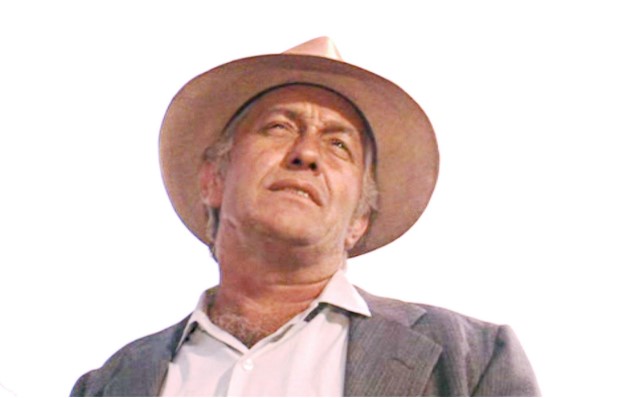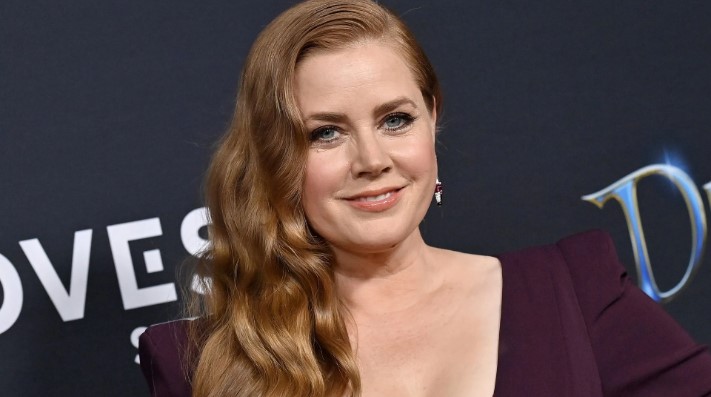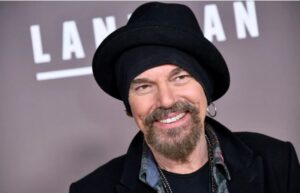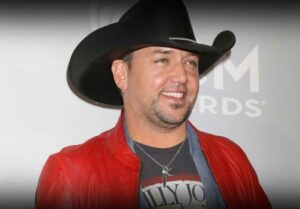Strother Martin measurements, net worth, nickname, height, weight ,age 2025
It was a man who began on the diving board, served in the navy and appeared to deliver one of the most memorable movie lines of all time. That man is Strother Martin. His journey all the way to Hollywood began with a simple Indiana life and a lot of talent, ambition and memorable parts. This paper will discuss his life up to the time of entering the film industry, his contributions to acting, his career and achievements such as western and television movies, as well as a legacy he left behind. It is very approachable and understandable – so either as a film lover or as an idler, you will get a good idea of his life and his work.
Who is Strother Martin?
Early Years and Back Story of Strother Martin.
Strother Douglas Martin Sr. and Ethel (né Dunlap) were the parents of the actor Strother Martin who was born on March 26, 1919 in Kokomo, Indiana. His family spent some time in the state of Texas in San Antonio, but after some time they moved back to Indiana.
Being a young man he was a good swimmer and a diver. At the age of 17, he was a winner of the National Junior Springboard Diving Championship. He also experimented in the greater championships and just missed the 1948 Olympic team.
He went to University of Michigan where he played in the diving team.
Military Service and Move Toward Hollywood
Strother Martin had served in the United States Navy as a swimming instructor during the World War II. The war was heading towards Los Angeles after the war. He was an instructor in swimming and, besides, he also had some additional work in movies, acting as a specialist in water scenes.
His initial work experience was simple but this helped him to begin his acting career. He worked his way up through bit parts to bigger parts.
Likewise, the variables in question are H3: Physical Traits and Early Nickname.
Due to his ability to fly and his skinny figure, he earned the title of T-Bone Martin. According to one source, he was approximately 5 ft. 5 in. (1.65 m). The sport discipline was likely to assist him in his strenuous acting and character part life.
Biography
| Attribute | Details |
|---|---|
| Full Name | Strother Douglas Martin Jr. |
| Nickname(s) | “T-Bone Martin” (nickname from his diving days) |
| Date of Birth | March 26, 1919 |
| Date of Death | August 1, 1980 (aged 61) |
| Age in 2025 | Would have been 106 years old (if still alive) |
| Height | 5′5″ (≈ 1.65 m) according to IMDb listing. |
| Weight | Not reliably documented |
| Measurements | Bust/waist/hip measurements — not applicable/available |
| Net Worth | Estimated at ~$1–5 million at time of his death. |
| Nationality | American (born in Kokomo, Indiana) |
| Profession | Actor (character/supporting roles) |
| Notable Facts | Known for the line: “What we’ve got here is failure to communicate.” in Cool Hand Luke (1967) |
Film and Television World Intrusion.
In the first on-screen appearances, there is no correlation between the two variables: that is, there is no correlation between the group being experimented with and that of the control group. First On-Screen Appearances There is no relationship between the two variables: i.e. there is no relationship between the group of which an experiment is conducted and the group of which a control is conducted.
Strother Martin started to appear in supporting parts and minor roles in early fifties. As an example, he took part in films such as The Damned Don’t Cry (1950) in bit parts. He guest-starred in television programs, mostly Westerns or anthologies, as well.
He acquired experience and fame because he was ready to perform diverse roles.
Employment in Westerns and Major Directors.
Strother Martin was a regular in the Western films. He collaborated with such superstars like John Wayne and such directors as Sam Peckinpah and John Ford.
>His work in movies such as the man who shot liberty valance (1962) demonstrated that he could make supporting characters memorable. His reputation was enhanced by his work in Westerns.
Television Roles and Versatility.
Besides the movie, Martin featured in numerous television programs. He had appeared as a guest star (such as in the television series) on such programs as Guns Smoke, The Dick Van Dyke Show, and so on. The fact that he could play a large variety of characters (both eccentric and threatening) helped to keep him busy and relevant. In one of the interviews, it was mentioned that the man they saw in reality was quite the opposite of characters that he was playing in most of his films.
Strother Martin Highlights of the Career.
Iconic Role in Cool hand Luke and Famous Line.
Among the most memorable performances made by Strother Martin was in the 1967 film Cool Hand Luke where he acted as a captain at the prison camp. It is in this movie that he gave the famous line:
It is lack of communication.
>This quote is placed in the 11th position in the list of the best movie quotes of the American Film Institute.
>The appearance caused him to become a memorable face outside of Westerns, as well as cemented his status as a strong character actor.
Western and Drama Roles in the Late 1960s.
In 1969, Martin featured in a number of high profile movies: The Wild Bunch, Butch Cassidy and the Sundance Kid and True Grit.
These films also depicted how diverse he was and how he could be appreciated in a cast.
Work in the 1970s, Television, and Later Films
He worked continuously in the 1970s. He also starred in a sport-comedy movie, Slap Shot (1977) with Paul Newman. The movie industry was also transforming around him without halting his career.
Awards, Recognitions and Notable Facts.
Even though Strother Martin was not a star, he was a recognized character actor. In 1974, as an illustration, he was nominated in a Golden Globe in his role in television in Hawkins (1974).
The following table describes a few of his career highlight points:
Screen Persona and Character Type.
Strother Martin was a frequent supporter actor who made his roles count. Even minor parts were memorable due to his face, voice, and his presence. He was a specialist in what we would call character actor roles; interesting characters who serve the narrative. One of the write-ups stated that he was not like his numerous characters.
>His acting and his words frequently were a great influence – the most famous quote in Cool Hand Luke is still echoing. His work demonstrated that a reinforcing role can make an impression.
Collaborations with Icons
Martin collaborated with several large stars and film directors. He has been featured in six movies with John Wayne and six movies with Paul Newman.
>Collaborating with such filmmakers as Sam Peckinpah and John Ford presupposed that he could be trusted to perform with a heavy hand and massive productions. Indicatively, one of the interviews reported that Sam Peckinpah pushed him in the making of The Wild Bunch.
Honestly, I really did not notice anything, and I think the reasons are similar: I was busy being sociable, and I had some notes to jot down.
Although he frequently took part in villainous roles or tough guys, he was in reality, according to those who knew him, gracious and soft-speaking.
>The fact that he was a diver on the national level and served in the military provides a more nuanced insight into his life story since the athlete was disciplined and served in the military before commencing acting.
Family and Personal Life and Last Years.
Marriage and Private Life
Helen Meisels was married to Styther Martin in 1967. The couple had no children.
>Although he played villains or heavy characters on screen, his off-screen life had other interests such as gardening and classical music.
Health Issues and Passing
Martin had health problems such as diabetes and cardiac problems in his later years. On August 1st, 1980 in Thousand Oaks, California, he passed away because of a heart attack at the age of 61.
He is interred in Forest Lawn Memorial Park, Hollywood Hills.
Legacy and Public Memory
The well-known quote of the movie Cool hand Luke is still used. Westerners and his fans of character actors will recall his roles. His flair to sparkle in supporting roles demonstrates the importance of consistency and art in acting.
Stroke of luck and Repute of Strother Martin.
The reason He Matters in Film History.
Strother Martin is an example of so-called character actor – an actor who does not necessarily play the lead in the movie but adds some flavor to it. These actors are essential elements of the story as demonstrated in his career. His appearance in Westerns also connects him to one of the iconic genres in the American cinema.
>His most well-known quote has become a part of the popular culture, so his face and voice have become a part of the film-history memory.
In the case of Modern Actors and Viewers.
His journey as an athlete, service member and actor demonstrates that there are plenty of paths to get to film. To the actors, his example demonstrates the value of being able to work in many directions, being dependable, and taking advantage of each scene. To the audience, his art will serve as a reminder that not all great acting is on the stage, and that supporting roles are important.
Conclusion
The movies that include Strother Martin are still viewed and analyzed. Film fans and critics still discuss the dialogue and characters that he assisted in bringing to life. His work is incorporated into the texture of the films of his times.
Biography and career Strother Martin has a rich life and career summed up as follows.
Strother Martin was born in Indiana, was a young diver who was recognized, served his nation in the Navy, and later turned towards the movie and TV industry. He was a supporting actor with a good, recognizable, and versatile career. His breakthrough came in the form of Cool Hand Luke as well as the well known quote of What we have here is failure to communicate. He was featured in several noteworthy Westerns and dramas up to the 1960s and 70s, worked with big names and filmmakers, and continued to do so until his death in 1980.
His heritage lives on in his performances and the fact that people are still interested in his roles. He teaches us not to undervalue a supporting actor who can make a scene more powerful and teaches us that acting is not only leading parts. His experience as an athlete which turned him into an actor also demonstrates that individual commitment and multitasking can result in a long-term presence.
To those who like to read about classic movie stars, westerns or character actors, the story by Strother Martin provides an insight into the life of a working actor, as well as the movie history behind the scenes. You may even see him when you next watch a Western, or a drama of his time and you will become aware of that familiar face.
FAQs
What was so famous about Strother Martin?
Strother Martin was well known in his strong supporting performances particularly in the film Cool hand Luke (1967) in which he read the line, what we got here is failure to communicate. This event contributed to his inclusion into the history of the film.
What were some of the genres Strother Martin usually attracted?
He often acted in Westerns and dramas and was acting in the movies directed by John Ford and Sam Peckinpah, and collaborated with such superstars as John Wayne and Paul Newman. He also featured on television in different genres.
What was the background of Strother Martin before acting?
He was an effective diver (champion of the U.S. National Junior Springboard Diving Championship) and an instructor in the U.S. Navy instructional swimming division during World War II, and only then acted. These are the experiences that influenced his discipline and life direction.
Did Strother Martin majorly win any awards?
Though he did not receive an Academy Award, he was nominated to a Golden Globe award in his role in the television series in the series Hawkins (1974). It was his consistency and constant performances rather than leading awards that brought him fame.
In what can I find the best of Strother Martin?
Perhaps some of his most famous work may be observed in Cool Hand Luke (1967), The Wild Bunch(1969), Butch Cassidy and the Sundance Kid(1969), True Grit (1969), and Slap Shot (1977). These are a good demonstration of his variety and prowess.














Post Comment